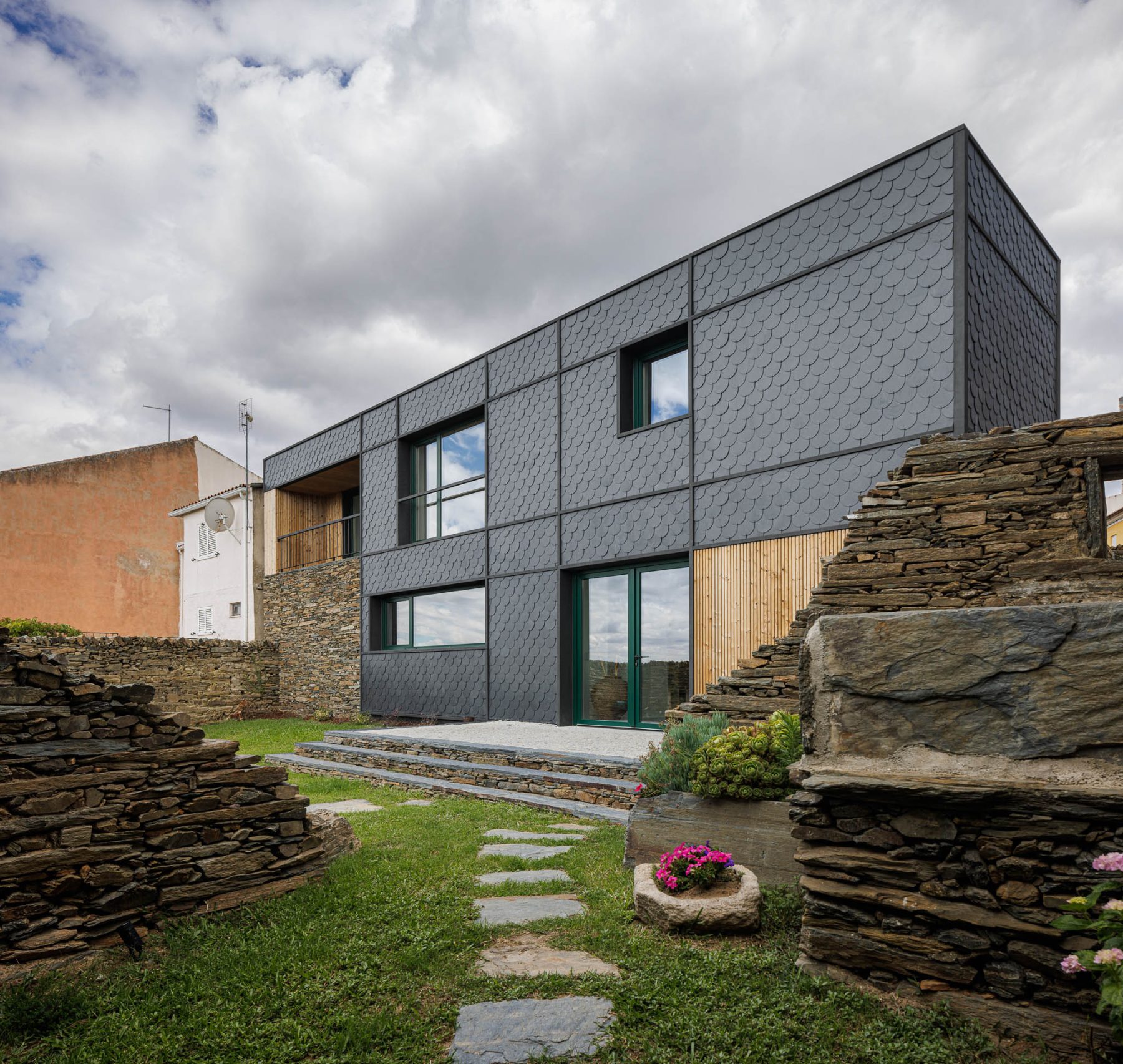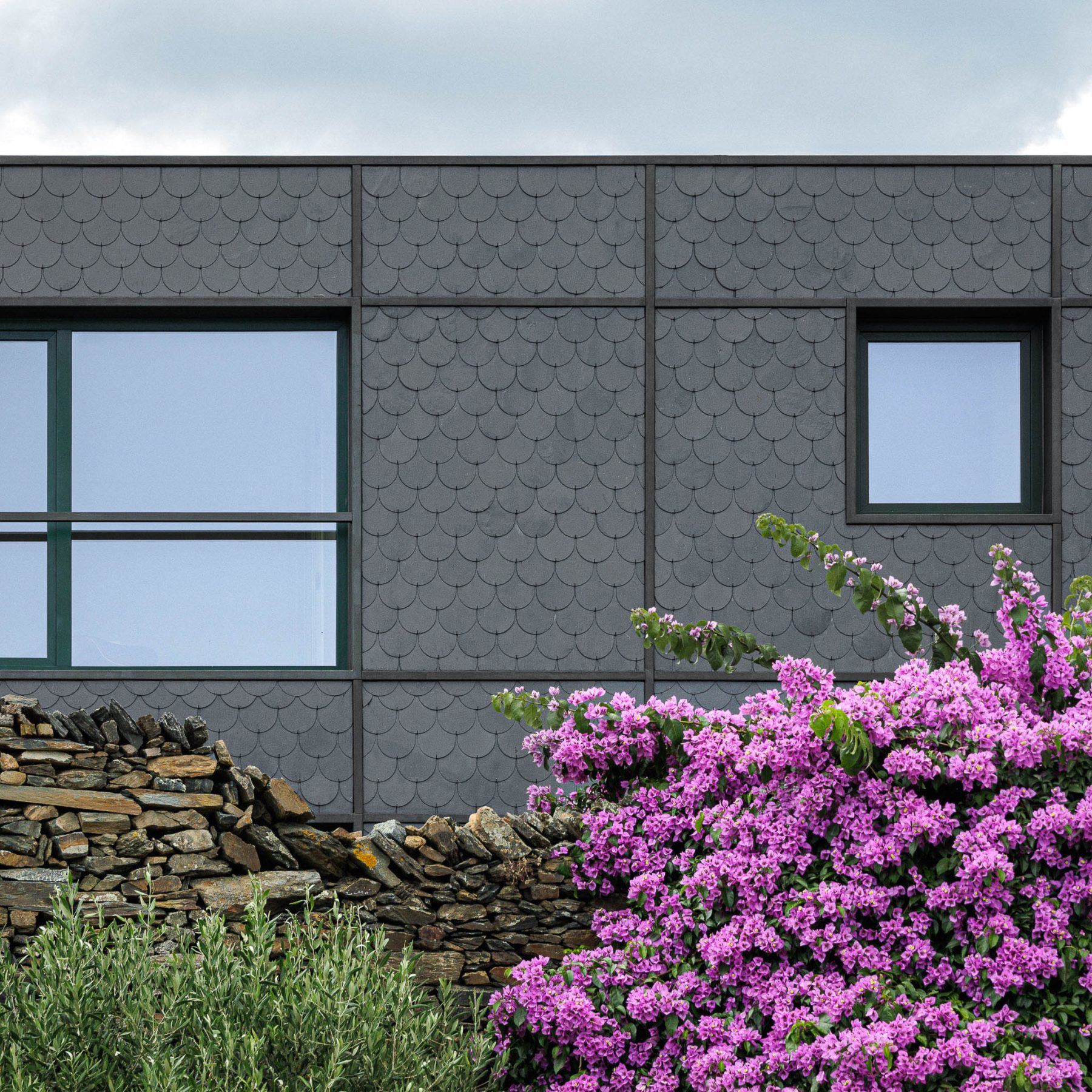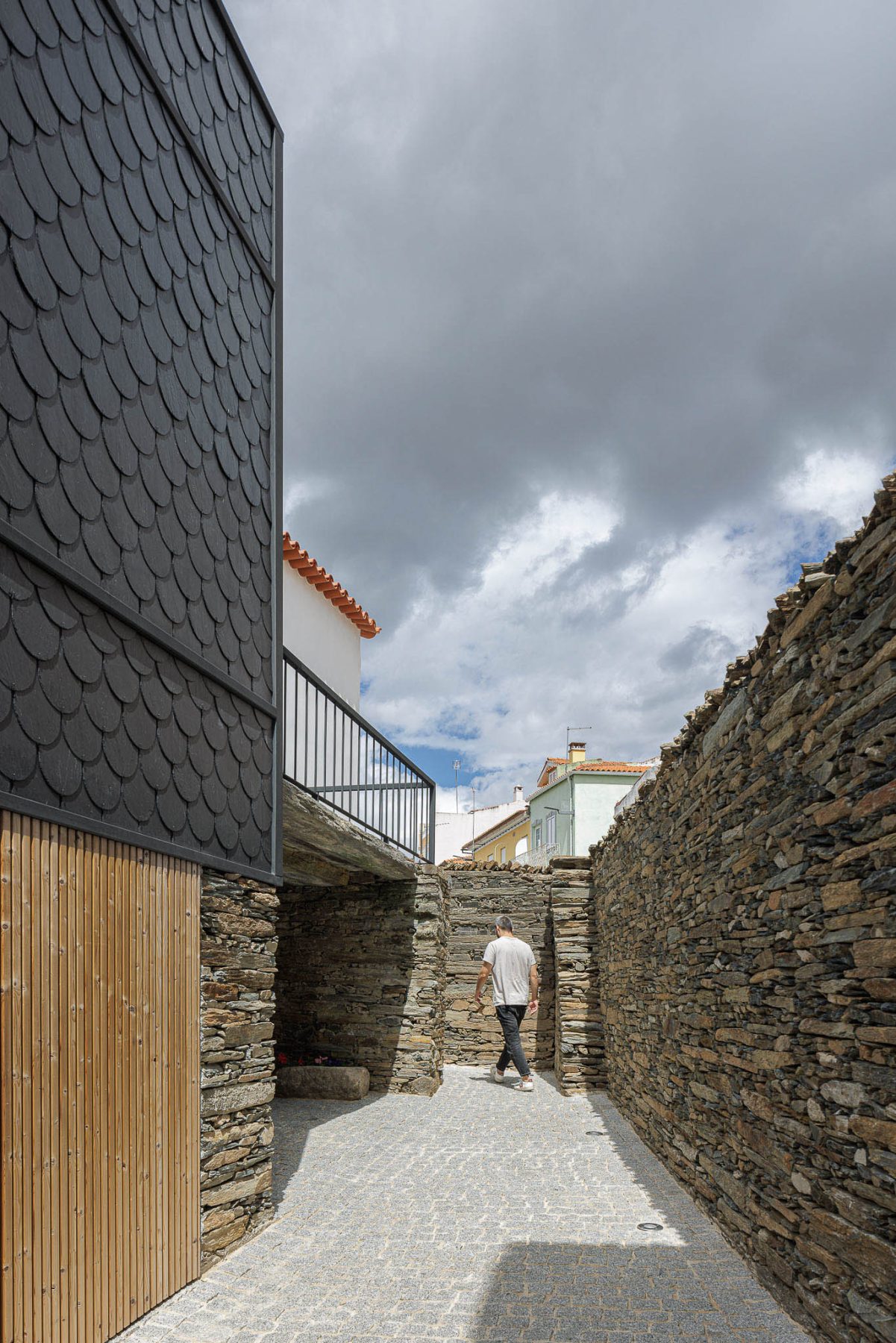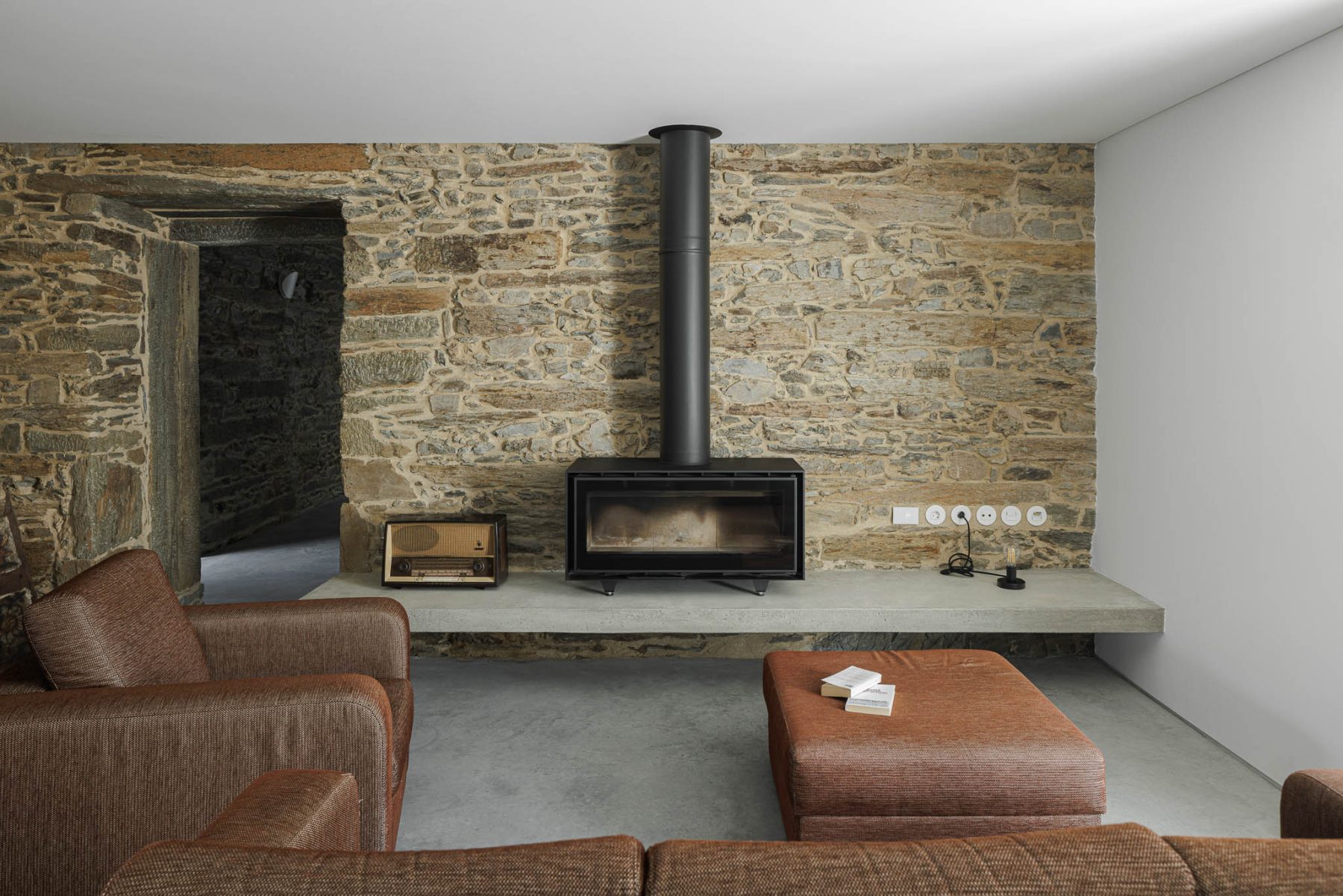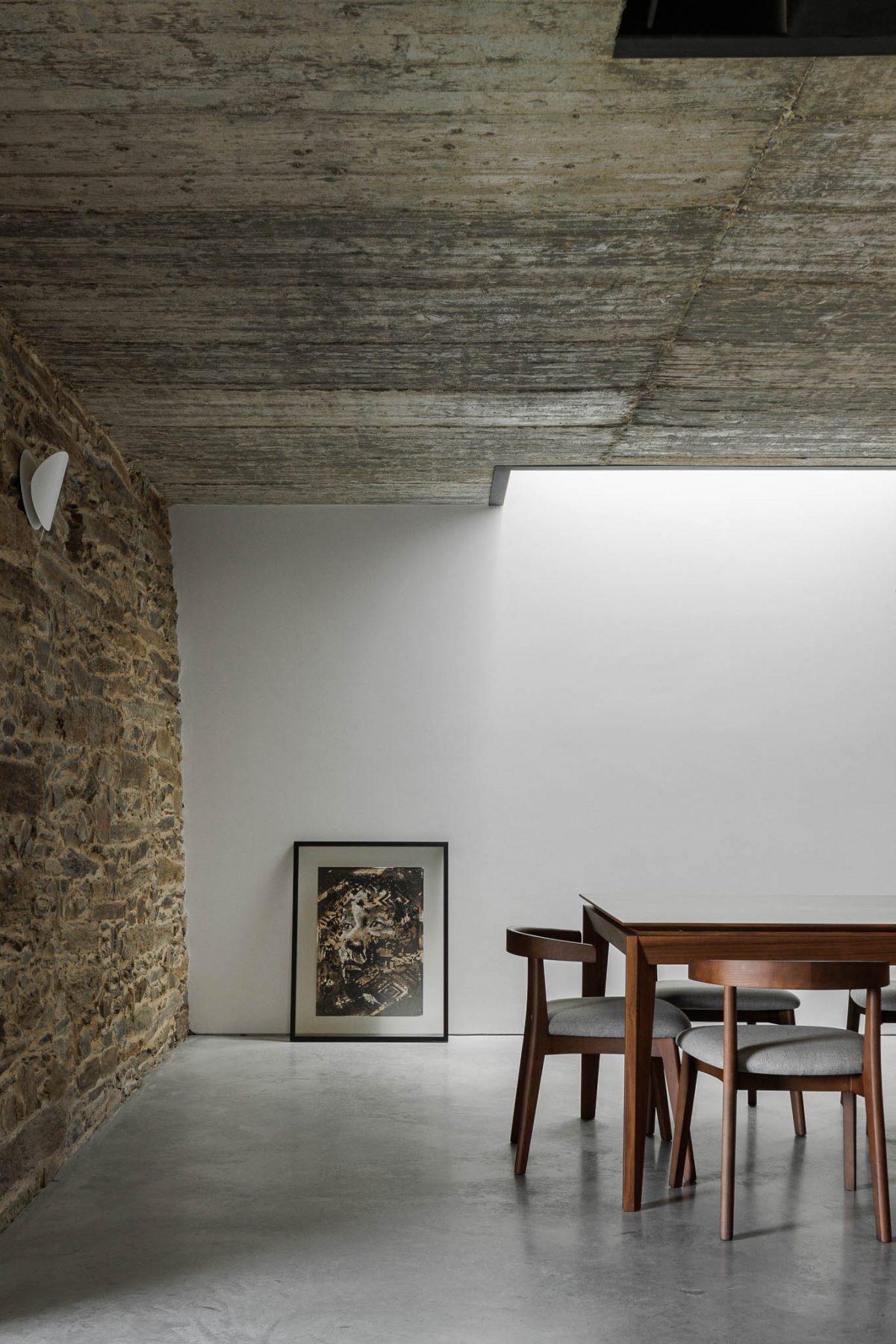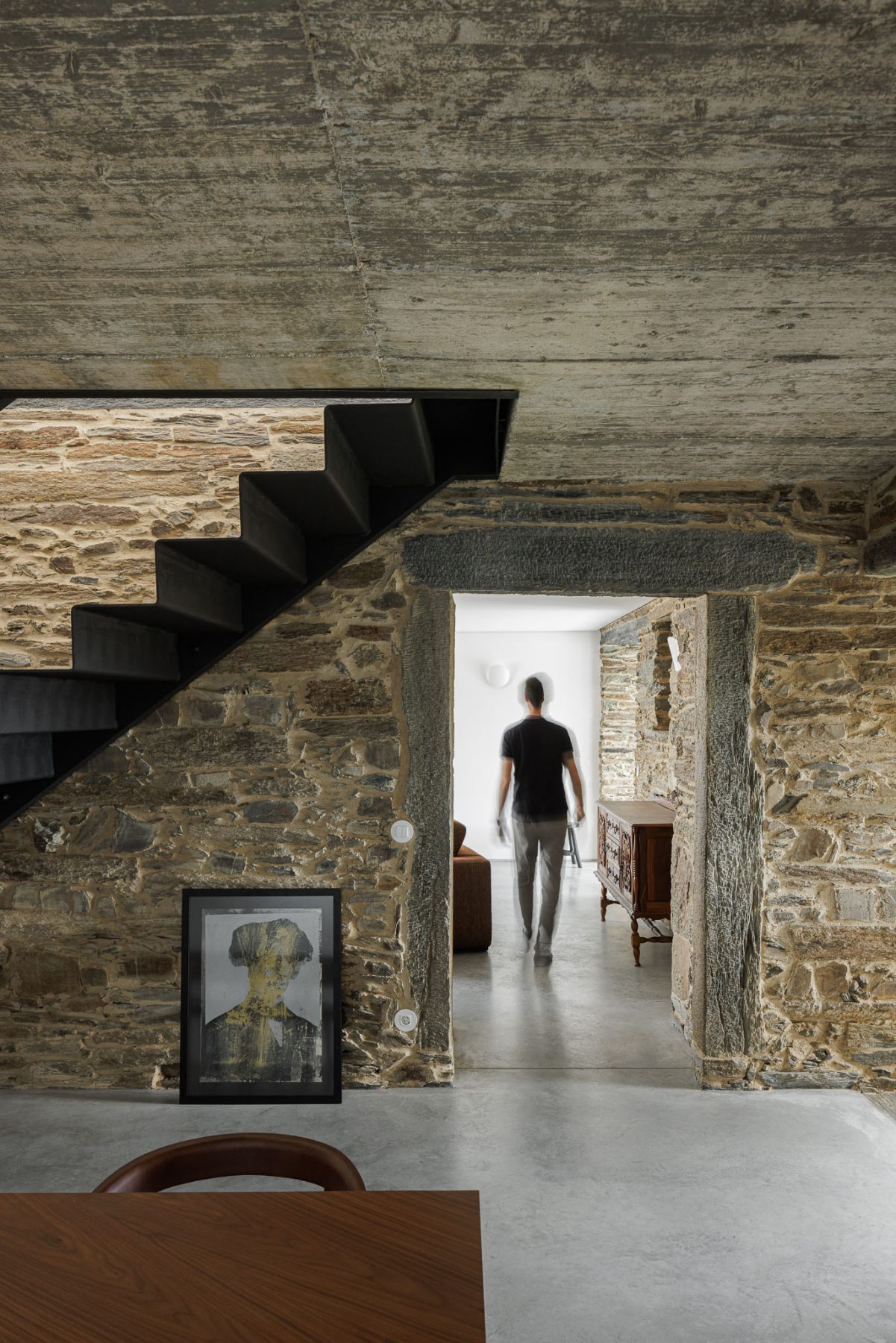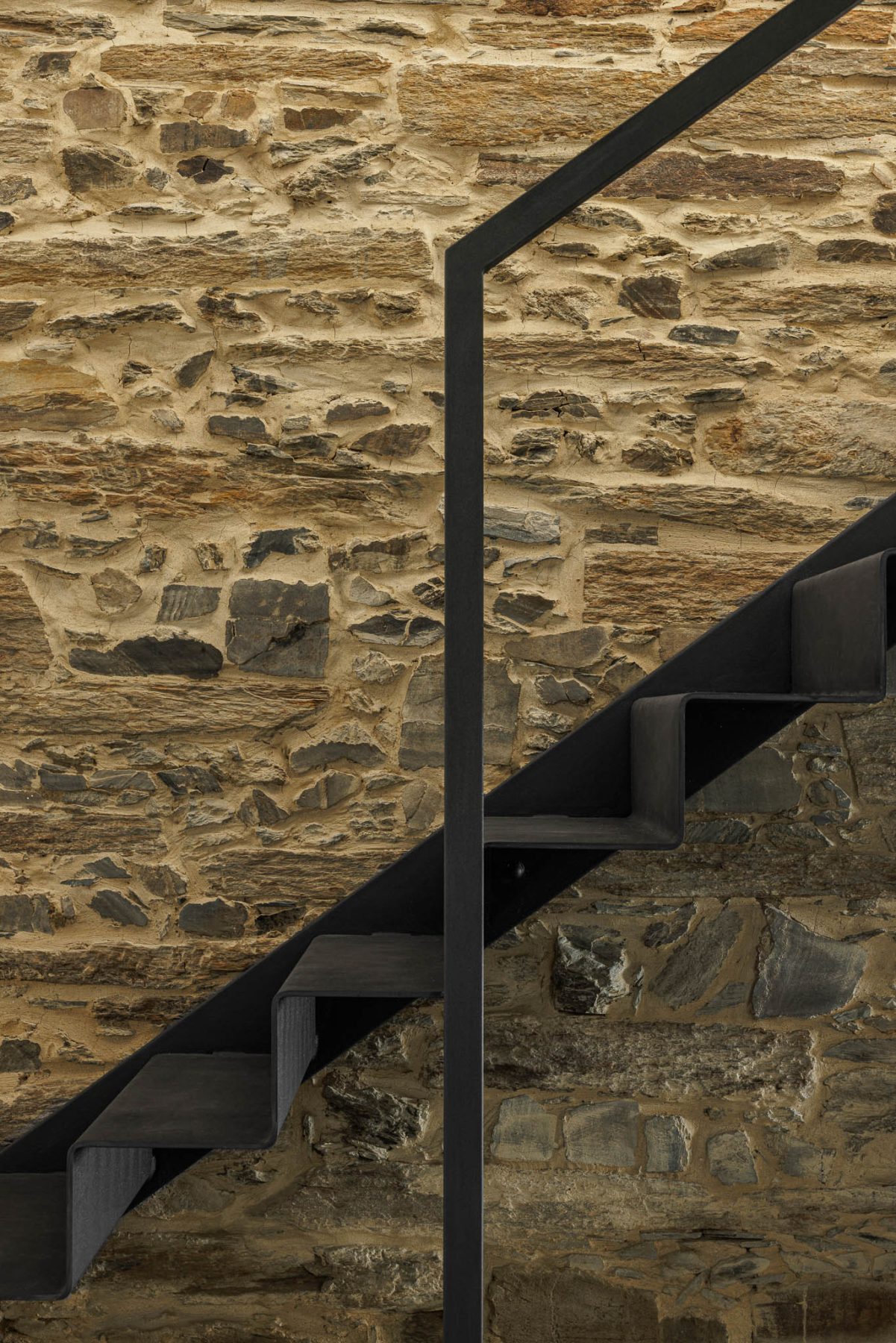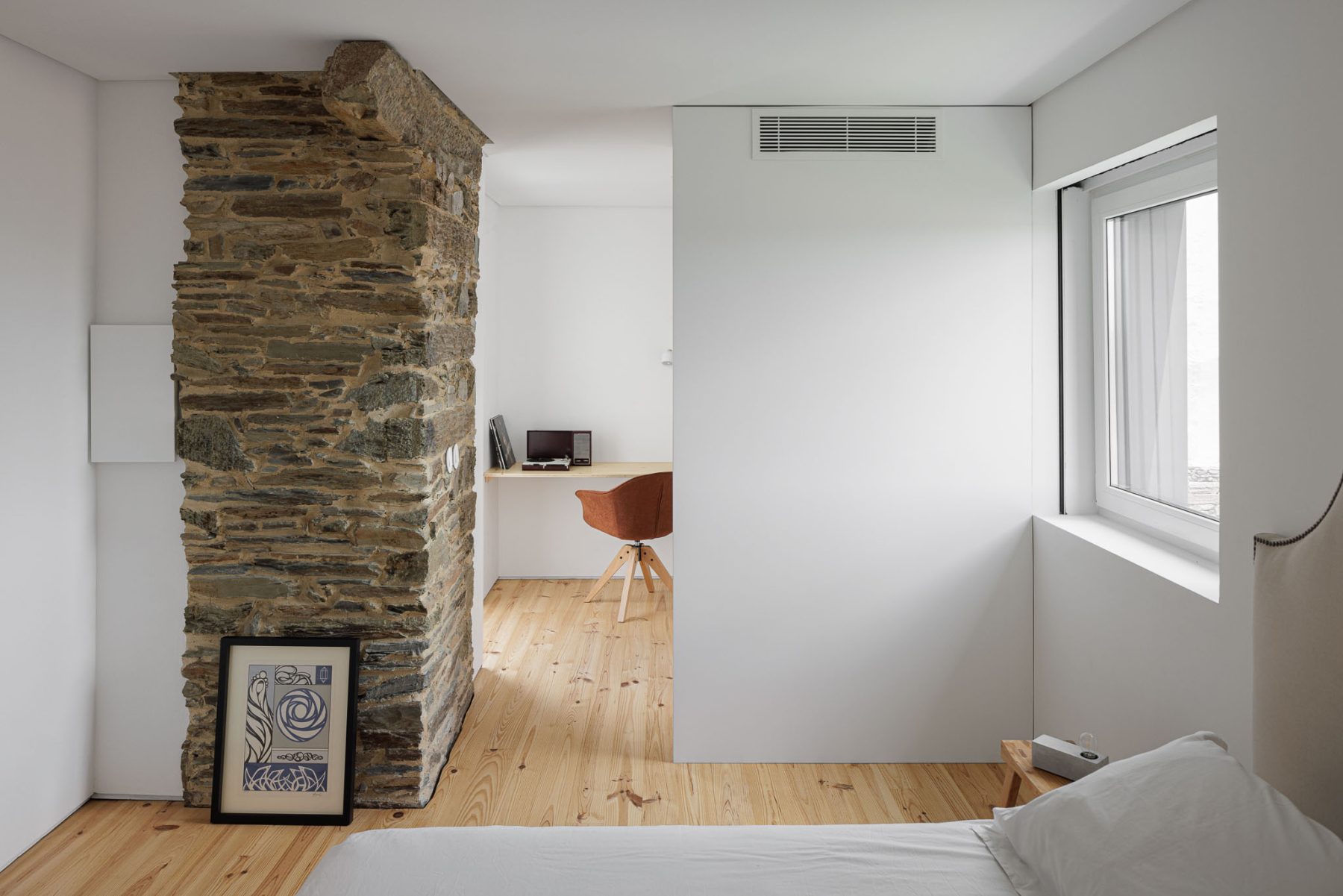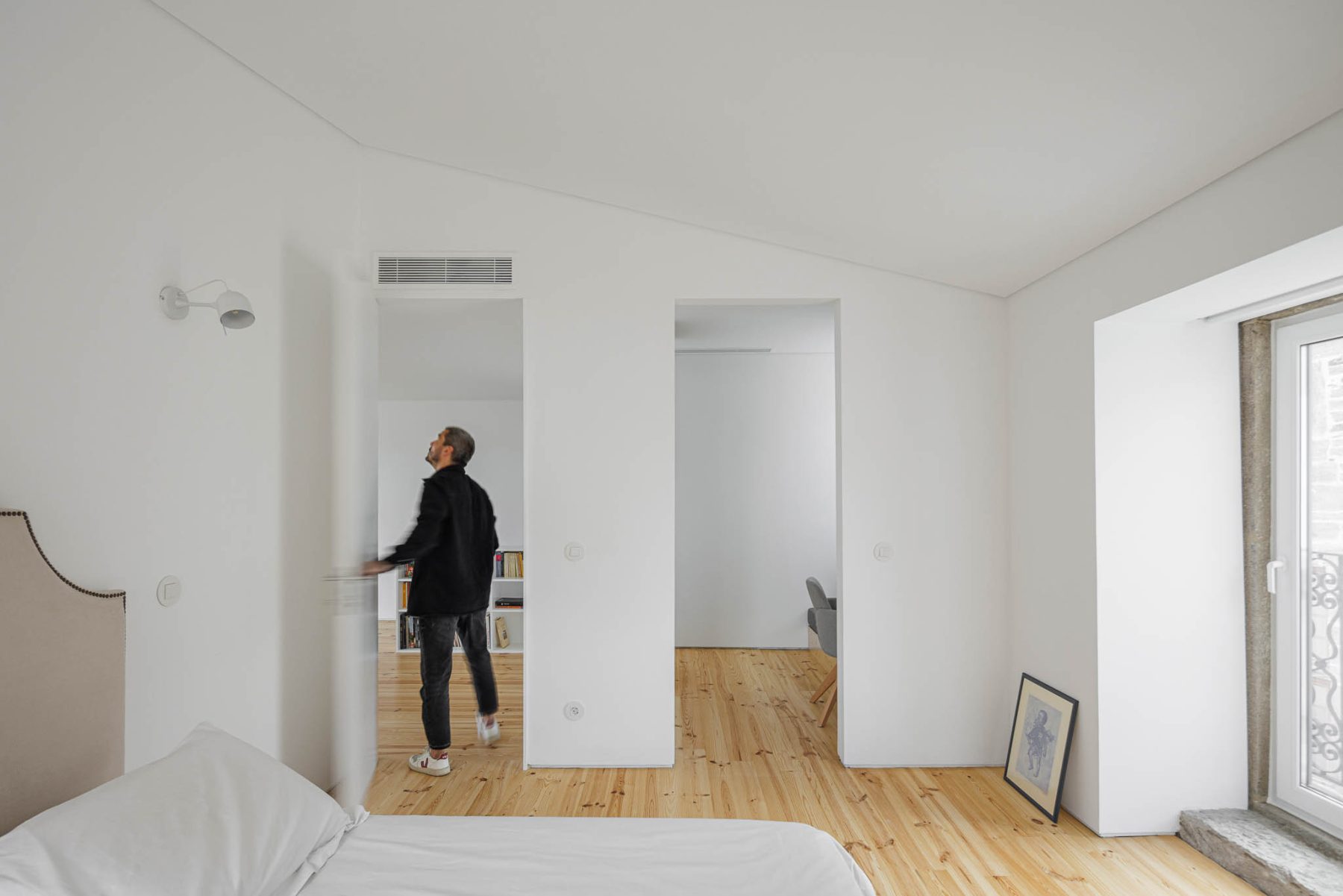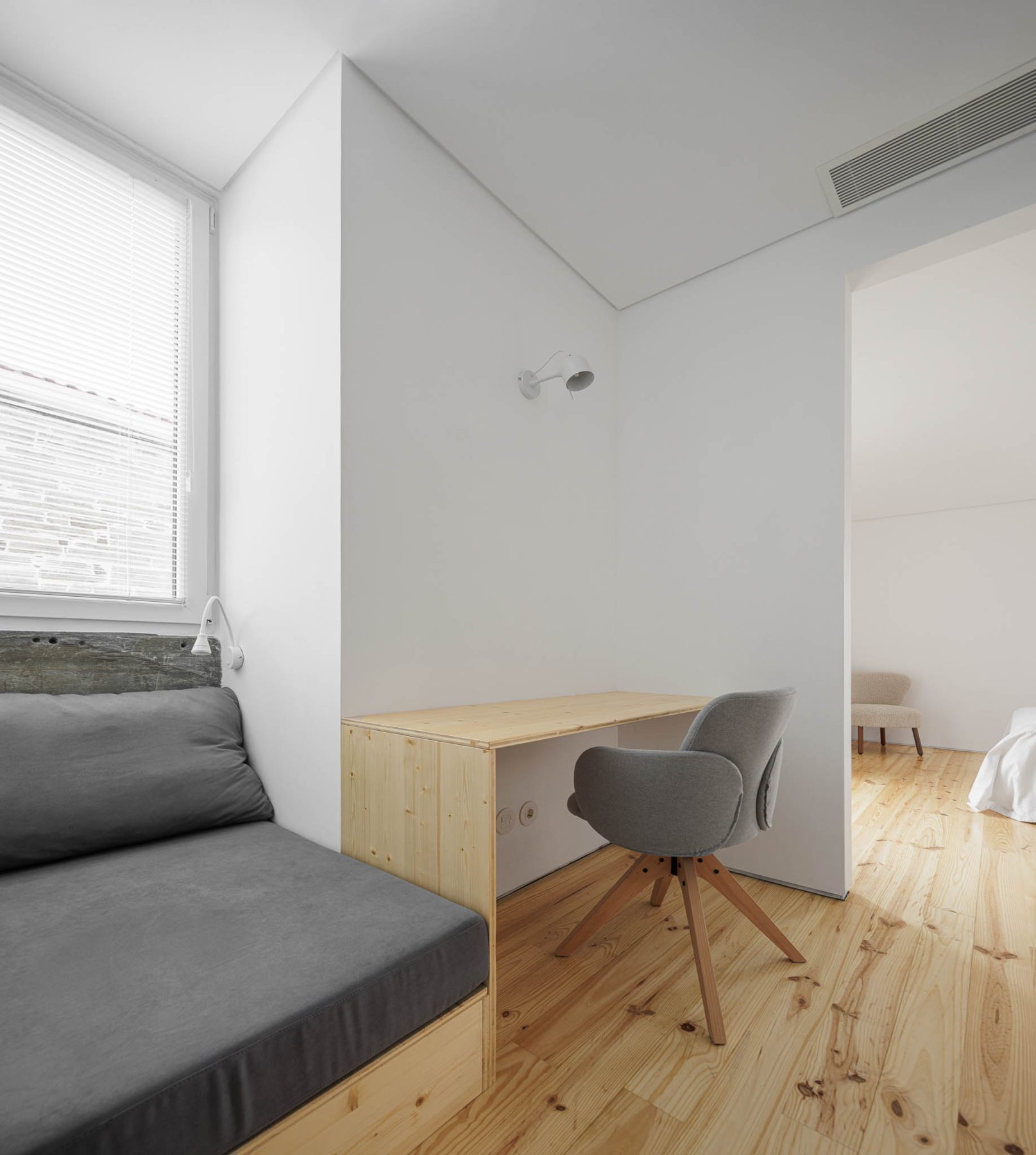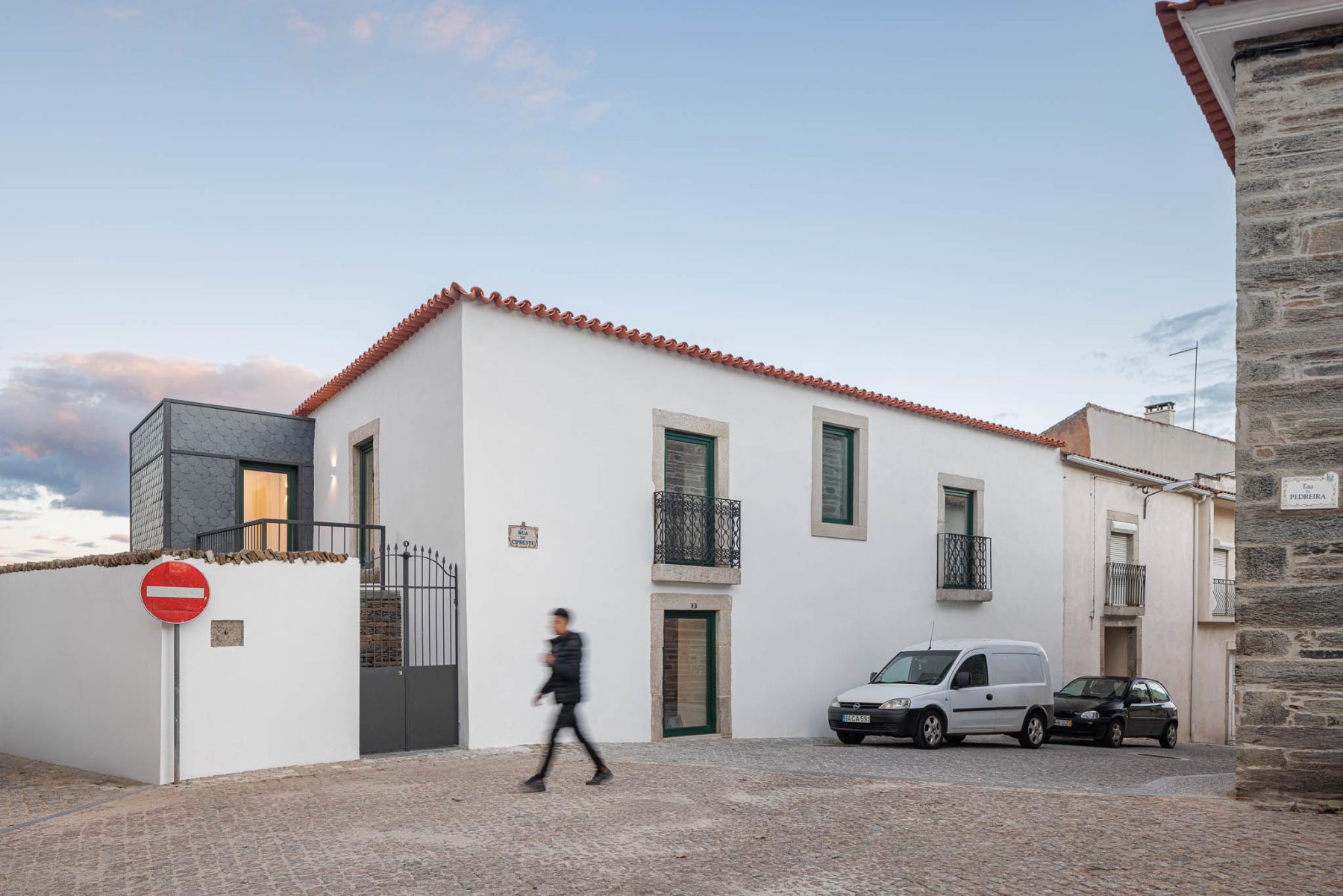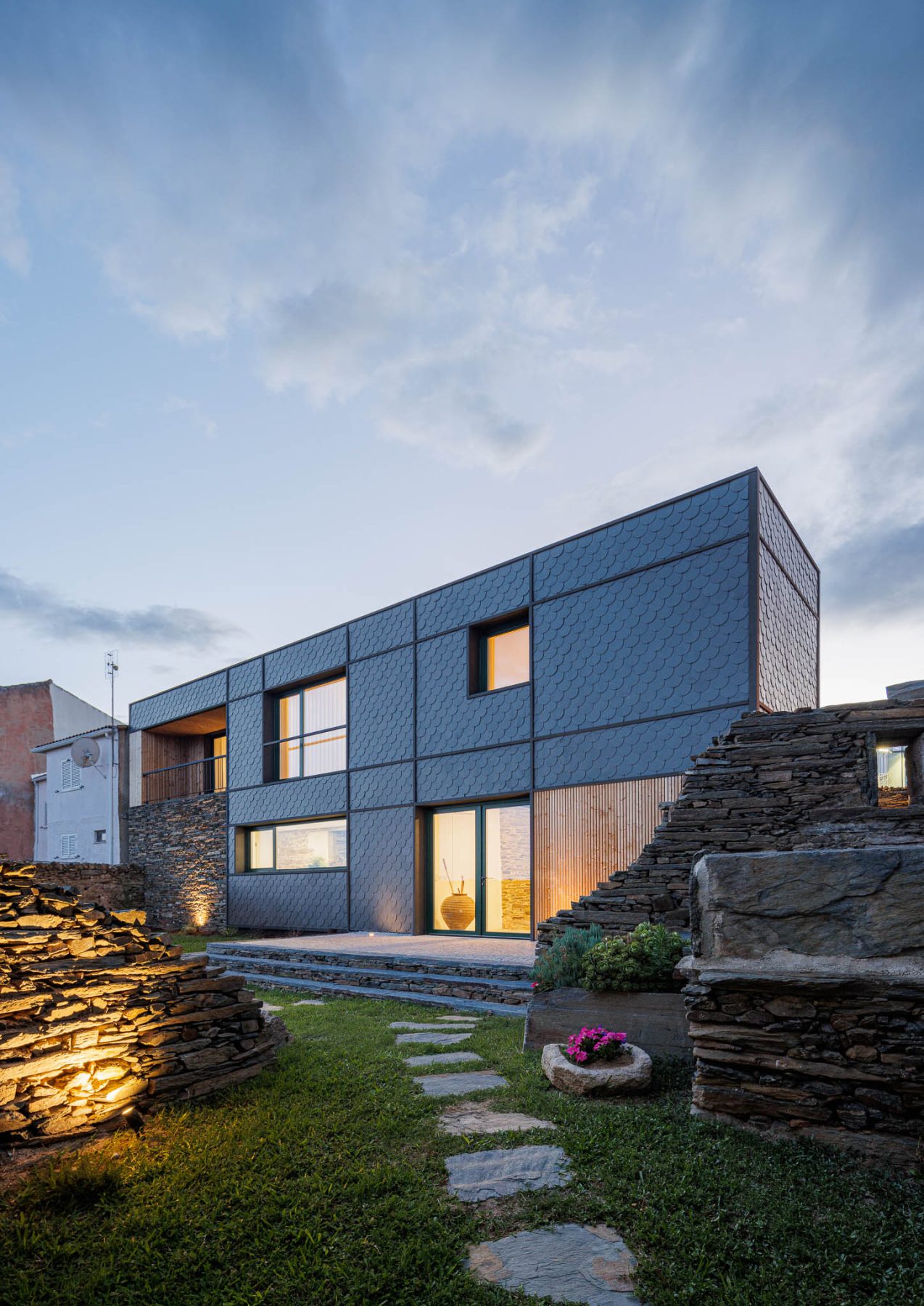DESCRIÇÃO DO PROJETO / PROJECT DISCRIPTION
"Inserido no centro histórico de Vila Nova de Foz Côa, o projeto centra-se na reabilitação de um edifício devoluto construído no final do século XIX, transformando-o numa habitação unifamiliar, onde as características arquitetónicas de carácter histórico são adaptadas a uma realidade habitacional contemporânea.
O alçado sul do edifício foi sofreando, ao longo dos anos e consoante as necessidades dos antigos proprietários, diferentes alterações e construções anexas, sem qualquer relação arquitectónica com a construção original. No entanto, destacam-se os soletos ardósia como revestimento principal, aplicados sobre estrutura em alvenaria de xisto. É a partir destes dois elementos de destaque (ardósia e xisto) que se propõe a reconfiguração do espaço e do alçado, respondendo, mesmo assim, ao método tradicional de construção, que procura destacar o alçado tardoz, orientado a sul, e assumi-lo como o novo alçado principal da habitação.
Sem descurar o valor histórico dos restantes alçados, recuperam-se os elementos existentes de serralharia e alvenaria de granito, nos alçados norte e nascente, e abrem-se novos vãos para sul, deixando a descoberto as ruínas em xisto, muros exteriores e as cores da natureza, para quem vive o interior da casa.
A nível construtivo optou-se por soluções tradicionais, com a seleção de materiais de origem natural, como o reboco à base de cal para as fachadas, caixilharias em madeira, pavimentos em madeira, isolamento com aglomerado de cortiça nos pavimentos e aplicação de soletos de ardósia.
A habitação organiza-se em dois pisos, sendo o acesso principal feito pelo alçado sul, ao nível do piso 0. É neste piso que se distribui toda a área social, num espaço conectado, apenas delimitado pelas paredes interiores pré-existentes, em alvenaria de xisto. No piso 1, organizam-se os três quartos num jogo de simetrias e rotações, onde o ponto de encontro culmina num espaço amplo com vista para a paisagem natural típica da região."
"In the historic centre of Vila Nova de Foz Coa, the project focuses on the rehabilitation of a devolved building built at the end of the 19th century, transforming it into a single-family dwelling, where historical architectural features are adapted to a contemporary housing reality.
The southern elevation of the building has suffered over the years, depending on the needs of the former owners, different alterations and associated constructions, with no architectural link with the original construction. However, slate thresholds are highlighted as the main coating applied on shale masonry structure.
It is on the basis of these two notable elements (slate and shale) that it is proposed to reconfigure space and elevation, still responding to the traditional method of construction, which seeks to highlight the back elevation, directed to the south, and to assume it as the new main elevation of the dwelling.
Without overlooking the historical value of the remaining stretches, the existing elements of granite sawmills and masonry are recovered on the northern and spring stretches, and new fans are opened south, leaving the ruins in shale, outer walls and the colours of nature uncovered for those living inside the house.
At the constructive level, traditional solutions have been chosen, with the selection of materials of natural origin, such as lime towing for the façades, wooden frames, wooden flooring, insulation with agglomerated cork on floors and application of slate thresholds.
At programmatic level, the dwelling is organised on two levels, the main access being made by the southern elevation at level of floor 0. It is on this floor that the whole social area is distributed in a connected space, bounded only by the pre-existing inner walls, in shale masonry. On floor 1, the three-quarters are organised in a game of symmetrics and rotations, where the meeting point culminates in a wide space for the natural landscape typical of the region."
